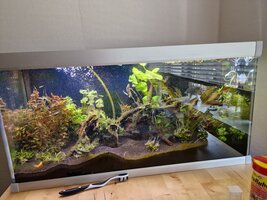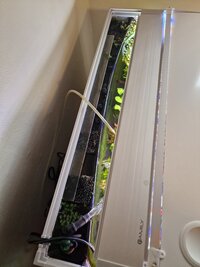You know, nitrites are the only substance you can detect, but it's not the only one which may be dangerous. Generally, people are focused on nitrogen cycle, but there's more about that.
If your tank has already seemed cycled, and then nitrites appeared again, I assume that it's not that nitrifying microbes are not developed but rather oxygen balance has worsened. Microbes do not have enough oxygen to do their job - oxidizing organic matter. And so, not only ammonium or nitrites may appear, but also other species. Perhaps most dangerous among them (more than nitrites) are (organo)sulfides, relatives of infamous hydrogen sulfide. You don't necessarily smell H2S, it still may be present in amounts higher than healthy. A plant killer, among others.
Perhaps you'd better quit feeding your fish for a couple of days. It can make the difference until microbes and plants get stronger.






